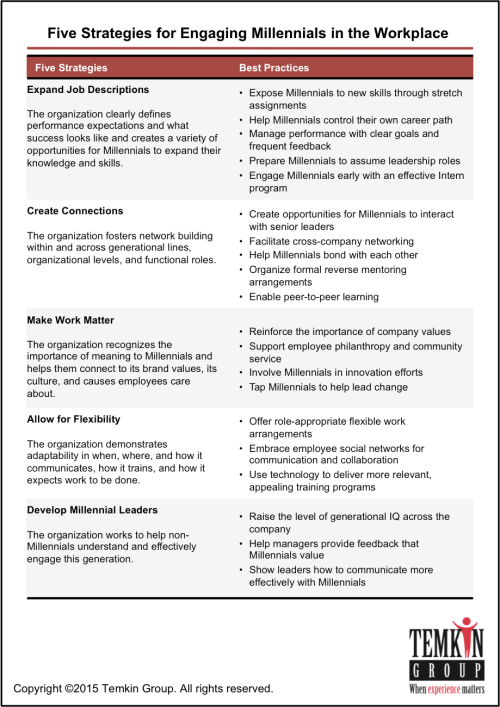Report: Engaging Millennials in the Workplace
March 10, 2015 Leave a comment
 We just published a Temkin Group report, Engaging Millennials in the Workplace, which provides five employee engagement strategies for younger workers. Here’s the executive summary:
We just published a Temkin Group report, Engaging Millennials in the Workplace, which provides five employee engagement strategies for younger workers. Here’s the executive summary:
Common estimates predict that the Millennial generation—those born between 1980 and 2000—will make up 60% of the workforce by 2020. As with each previous generation, this group of employees brings its own set of expectations, attitudes, and approaches to the job, which creates both challenges and opportunities for the organizations that employ them. Temkin Group research found that compared to other generations, Millennials desire opportunities to learn and advance their careers as well as opportunities that allow them to be creative and work flexible hours. To engage Millennials more effectively in the workplace, companies should deploy five strategies across Temkin Group’s Five I’s of Employee Engagement. These five strategies are: Expand Job Descriptions, Create Connections, Make Work Matter, Allow For Flexibility, and Develop Millennial Leaders. We also added a checklist to help HR departments drive these five strategies across their core processes.
Here’s an overview of the five strategies:
The bottom line: Engaging Millennials is no longer an optional focus.
